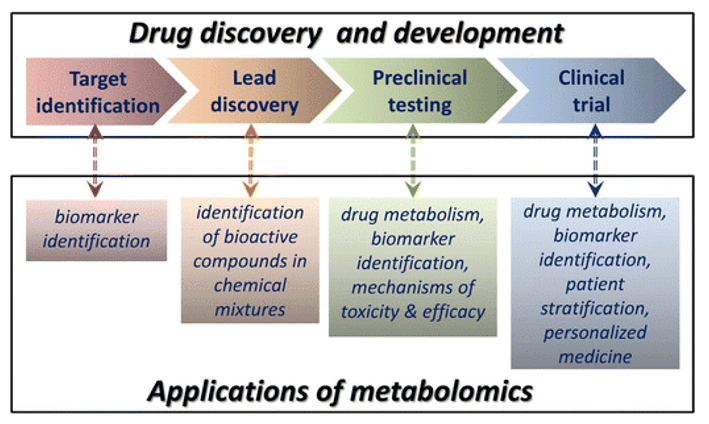Linoleic Acid Metabolism Service
Submit Your InquiryLinoleic acid is a polyunsaturated omega-6 fatty acid. As the two families of essential fatty acids, animals must ingest linoleic acid from diet because the body requires them but cannot synthesize them by themselves. In the body linoleic acid is a metabolic precursor to some long-chain polyunsaturated fatty acids via desaturation and elongation, which happen in the endoplasmic except for the final step which requires translocation to peroxisomes for partial beta-oxidation. Because of this, linoleic acid metabolism can provide many kinds of polyunsaturated fatty acids, which is necessary for good health. Therefore, aberrant linoleic acid metabolism in the procedure of desaturation and elongation lead to various diseases in animals. Scientists at Creative Proteomics utilize a highly quantitative method with LC-MS for the determination of Linoleic Acid levels in various samples.
The detection of linoleic acid and its metabolites can be used to study the metabolic and biological effects of this essential fatty acid in health and disease. Creative Proteomics offers a variety of services to support the analysis of linoleic acid metabolism, including sample preparation, LC-MS analysis, and data analysis.
One of the primary methods used for linoleic acid metabolism analysis is liquid chromatography-mass spectrometry (LC-MS). This technique allows the separation and detection of linoleic acid and its metabolites in biological samples such as plasma, urine and tissues. Creative Proteomics offers LC-MS analysis services for linoleic acid metabolic analysis, which involves the extraction and purification of linoleic acid and its metabolites from samples, followed by separation and detection by LC-MS.
Several assay strategies are available for linoleic acid metabolism analysis, including targeted and non-targeted methods. Targeted assays involve the detection and quantification of specific linoleic acid metabolites, while non-targeted assays involve the detection of all metabolites present in the sample. Both methods have their advantages, and the choice of method depends on the research question and the available resources.
Applications of Linoleic Acid Metabolism Service
Studies of physiological processes: Study the role of linoleic acid and its metabolites in various physiological processes, including inflammation, lipid metabolism, and oxidative stress.
Identification of biomarkers: Identify potential biomarkers of disease, such as metabolic changes associated with cancer or metabolic disorders.
Assessment of therapeutic interventions: Evaluate the effects of therapeutic interventions, such as pharmacotherapy or dietary interventions, by assessing changes in linoleic acid metabolism and their downstream effects.
Advantages of Our Linoleic Acid Metabolism Service
- Constantly optimized protocol and analytical software
- Professional experiment design
- Quick turnaround time
- High accuracy, specificity, and sensitivity
Service Workflow
Creative Proteomics provides linoleic acid metabolism analysis service in a reliable and effective manner, based on our cutting-edge LC-MS platforms. The experimental procedures contain four main procedures: sample collection, metabolites extraction, LC-MS data analysis and bioinformatics analysis (Figure 1). Our service will be tailored to specific samples and needs for optimal results.
 Figure 1. The overall workflow of linoleic acid metabolism
Figure 1. The overall workflow of linoleic acid metabolism
List of Partial Detectable Linolenic Acid Metabolism Related Metabolites at Creative Proteomics
| (9R,10S)-(12Z)-9,10-Epoxyoctadecenoic acid | 9(S),12(S),13(S)-Trihydroxy-10(E)-octadecenoic acid | (9Z,11E)-13-Oxooctadeca-9,11-dienoic acid |
| (10E,12Z)-9-Oxooctadeca-10,12-dienoic acid | (8R,9Z,12Z)-8-Hydroperoxyoctadeca-9,12-dienoate | (13S)-Hydroxyoctadecadienoic acid |
| 13S-Hydroperoxy-9Z,11E-octadecadienoic acid | (11E)-9,10,13-Trihydroxyoctadec-11-enoic acid | 9,10-12,13-Diepoxyoctadecanoate |
| Dihomo-gamma-linolenat | Docosapentaenoic acid | Gamma-Linolenic acid |
| Arachidonate | Linoleate |
Sample Requirements
We can analyze a wide range of biological materials including but not limited to cells and solid tissues from animals. If you need transport your samples to us, please follow the following requirements for different types of sample:
- Blood/plasma: 500ul/sample
- Urine: 1ml/sample
- Tissue: 200mg/sample
- Cells: 1x107/sample
- Feces: 500mg/sample
Shipment condition: dry ice
Report Delivery
- Experimental protocols
- Instrumental factors of LC-MS
- The raw data files of LC-MS and the summary of LC-MS data quality
- Bioinformatics analysis report
Based on advanced LC-MS platforms for the determination of linoleic acid metabolism, professional bioinformatic analysis software and experienced technicians and scientists, Creative Proteomics provides customer-tailored linoleic acid metabolism analysis service with rapid experimental procedures and easy to read report, to accelerate your scientific research.
References
- Choque Benjamin, Catheline Daniel, Rioux Vincent, et al. Linoleic acid: between doubts and certainties. Biochimie. 2014.96:14-21.
- Taha Ameer Y. Linoleic acid-good or bad for the brain? NPJ Sci Food. 2020. 4:1.






